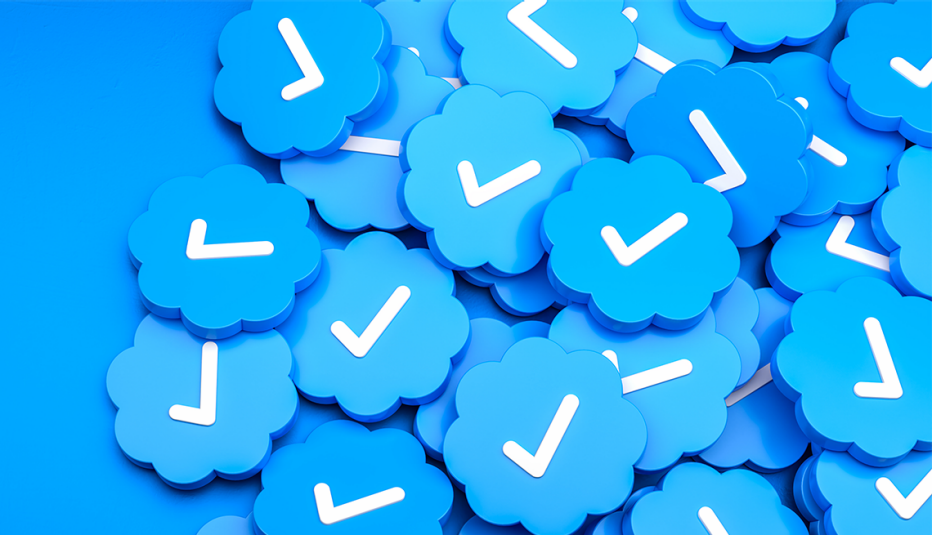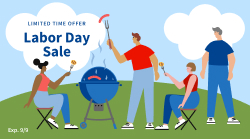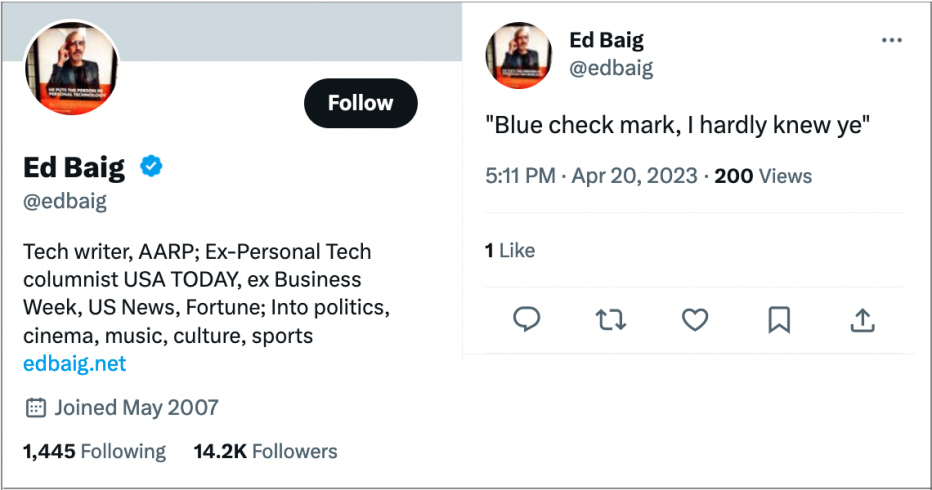AARP Hearing Center


On April 20, Twitter boss Elon Musk followed through on a threat to remove blue verification check marks from “legacy” Twitter accounts unless account holders paid.
The controversial policy leaves many who flock to Twitter for breaking news feeling blue themselves. Pre-Musk Twitter attached blue check marks to Twitter handles as a stamp of authenticity bestowed upon notable people and organizations.
Check marks were typically issued to athletes, celebrities, government agencies, politicians and members of the media who were independently verified. To keep or get a blue check mark now along with certain other features, people must opt into a Twitter Blue subscription, which has a basic cost of $8 a month, or $84 a year.
Dan Evon, senior manager of education design at the nonprofit News Literacy Project, which tries to help people identify credible news, says people who go on Twitter only periodically may have missed the significance of the change.
“This content comes really fast, and one of the things that blue signals were great for was this little indicator of trust,” he says. “You knew who was sending this information to you. And that’s no longer the case.”
Users aren’t buying into Twitter Blue
Only a few people on Twitter are actually paying for Musk’s subscription plan. About 600,000 of Twitter's 250 million users subscribe to Twitter Blue, according to the Mashable online news outlet. Less than 5 percent of folks who had legacy verified accounts are choosing to subscribe.
Pope Francis, Microsoft co-founder Bill Gates, Halle Berry and Oprah Winfrey were reportedly among the many prominent people who saw their blue check marks disappear though at least some high profile accounts with more than 1 million followers have since seen the badges reinstated — even without a subscription. Bizarrely, check marks have also been resurrected next to accounts for deceased celebrities such as Chadwick Boseman, Anthony Bourdain and Kobe Bryant.
Musk himself picked up the fee for such Twitter Blue critics as NBA superstar LeBron James, author Stephen King and Star Trek actor William Shatner without their consent.
(This writer’s own blue check mark has been confiscated.)
Why blue check mark verification began
The previous blue check mark originated in 2009 when then-Manager Tony LaRussa of the St. Louis Cardinals baseball team filed a lawsuit against Twitter. Someone impersonated his account and posted derogatory and demeaning material under his name.
Twitter’s current verification system includes gray check marks for government organizations and gold ones for verified businesses in addition to the blue check marks.




































































More From AARP
6 Ways to Ensure Travel Reviews Don’t Steer You Wrong
Robots, paid reviewers and those with a grudge can mask authentic, reliable reviews
6 Tips to Avoid Buying Fake Products
How to spot fake products and shop safely online
How to Spot Fake Reviews Before You Purchase a Product
Be wary, but online marketplaces, FTC are cracking down